
TOWNS are small settlements in the countryside where people begin to settle with access to water and local food. Settlers establish their shelter and meet their necessary water, energy, and food needs by building homes and laying out vegetable gardens, as well as areas to raise chickens, goats, and cows. As one household joins another, towns attract people with markets, cafes, bakeries, and home goods stores. Markets offer a wide range of food, materials, tools, and much more. Many towns create central greens, gathering spaces, and covered markets. Towns with a few buildings begin to attract more people with trades and crafts. Towns are larger than villages but smaller than cities. Towns are inhabited by townspeople! Going to town means having fun doing things there! As towns attract more residents, they expand with commercial buildings, service centers, libraries, schools, town halls, religious buildings, and banks. Towns may even have a central green or gathering space with cafes, shops, and other amenities. In the United States, towns are incorporated and have boundaries. In other countries, small towns of different sizes can be seen in the countryside. Do you live in a village, a town, or a city?
Activity 1 – Historic Towns
The earliest European and African American settlements in the United States were established in St. Augustine, founded in 1565 on the east coast of Florida. The town, founded by Ponce de Leon, introduced Catholicism to the native indigenous peoples who initially settled there. Shortly thereafter, between 1607 and 1608, the Spanish, English, and French founded settlements north of the 30th latitude that survived despite the odds against them. In 1607, Spaniards founded Santa Fe as a Spanish colony and it became the capital of the New Mexico highlands, building on the O'Ga P'Ohé (Tewa for “White Shell Water Place”) lands of the Pueblo Indians along the Santa Fe River, a tributary of the Rio Grande River. The British established Jamestown on the Atlantic coast in 1608. French settlers established a town on the St. Lawrence River, named Quebec. Today St. Augustine is a historic site with Spanish Architecture, Cathedrals, Convents, and the Fountain of Youth. Alvis Street is the oldest street in the US, and it has Spanish-style balconied buildings. Jamestown is a historic site where people can experience the first permanent English colonial settlement. Santa Fe is still the capital of New Mexico and the cultural center of southwestern art.
All of these towns are still surviving; some have grown into cities!
Activity 2 – Town Layouts
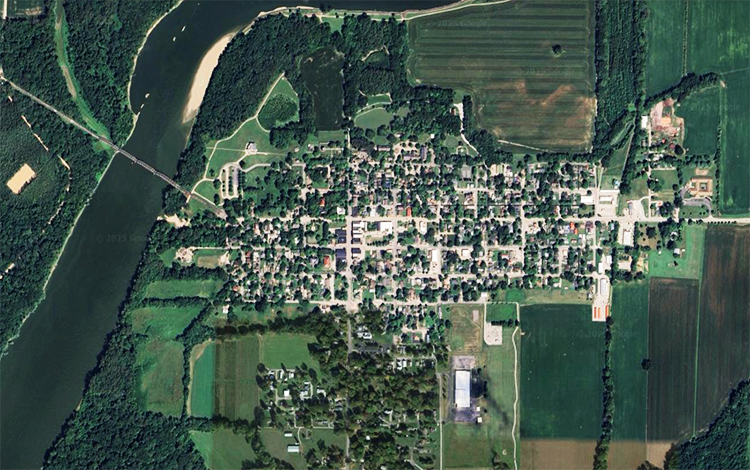
Every town nestles in its landscape. Small towns can be found in the countryside, beside inner lakes, by the ocean, in the mountains, and in the valleys. They may develop linearly on the crest of a hill with an ancient castle as a lookout for invaders, or down in valleys following the path of a river. Some towns have a semi-circular layout from a waterfront or centrally from a town center or town green. Some towns develop on an orthogonal grid. Towns have defined edges and do not sprawl into farm fields or the countryside. Some towns consist of one- to two-story buildings, while others are denser, featuring townhomes and other multi-unit dwellings of up to four or even six to eight stories. Many towns offer seasonal or year-round farmer markets where fresh produce is shared. People in the towns celebrate historical and cultural events, such as parades, horse races, bull runs, cheese festivals, and wine harvests. Today, towns are treasured places to live! Each town is unique.
Draw a plan for a village and a town, or use OPEN STREET MAP to draw a town or village of your choice.
Activity 3 – TOWN Life
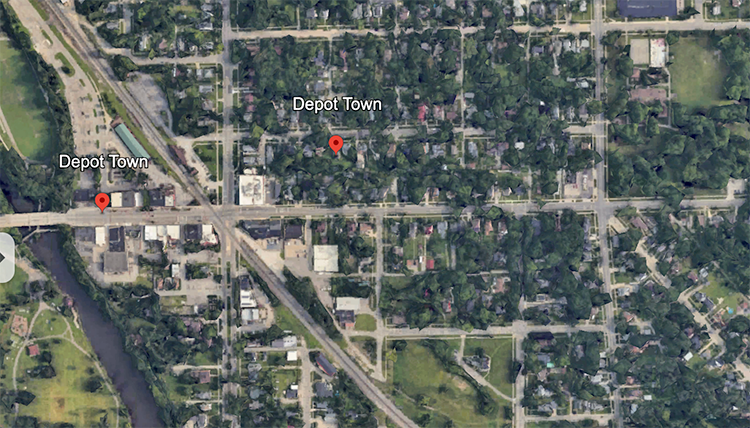
Each town is unique. Towns operate locally, offering a variety of crafts, food, and drinks. People live and work in their towns. Towns are, by and large, self-sufficient. Towns that have survived for centuries are essential for their history and the heritage of their buildings, and many are renowned for their tapestries, ceramics, sculpture, fabrics, leather goods, glass, jewelry, and other fine arts. ‘Town’ originates from a British term for enclosed areas, such as a fenced farm, a walled courtyard, or a town with defined boundaries. Towns are inhabited by townspeople! Going to town means having fun doing things in town! Towns also have more residents and commercial buildings offering food, baked goods, hardware services, and more. Towns are walkable to all the necessary services needed. They have schools, a library, and a bank. Towns may even have a central green or gathering space with cafes, shops, and other amenities. In the United States, they are incorporated and have boundaries. Going to town means having fun doing things in town!
Draw a small town and label key markets, parks, paths to rivers, restaurants, and historic buildings
Activity 4 – Town Cultures
Towns develop differently across cultures, drawing upon local traditions, social structures, environmental factors, and historical influences. Towns operate locally, offering a variety of crafts, food, and drinks. Towns are, by and large, self-sufficient. Towns become known for their local artisanship, including tapestries, ceramics, sculpture, fabrics, leather goods, glass, and jewelry. Shared themes include the integration of cultural landmarks, community-centered design, and regional arts and crafts, which offer unique urban identities. Some towns prioritize the integration of nature with gardens and green spaces, while others focus on local architectural crafts and bustling market squares. Some cultures prioritize communal spaces, such as plazas or courtyards, while others focus on linear street grids. Local materials and traditional construction methods, such as adobe bricks in arid regions or timber framing in forested areas, celebrate indigenous building techniques. Prominent religious buildings, such as mosques, temples, or churches, serve as focal points in the town. Town development reflects social structures, with different neighborhoods catering to other social classes. In some cultures, community collective decision-making in planning and development is valued. Regular cultural events are crucial to a town’s life, attracting tourists and boosting the town’s economy. Local culinary traditions often play a substantial role in town development, with dedicated markets and restaurants. Which Town cultures capture your attention?
Which Town cultures capture your attention?
Activity 5 – Draw ALONG TOWN
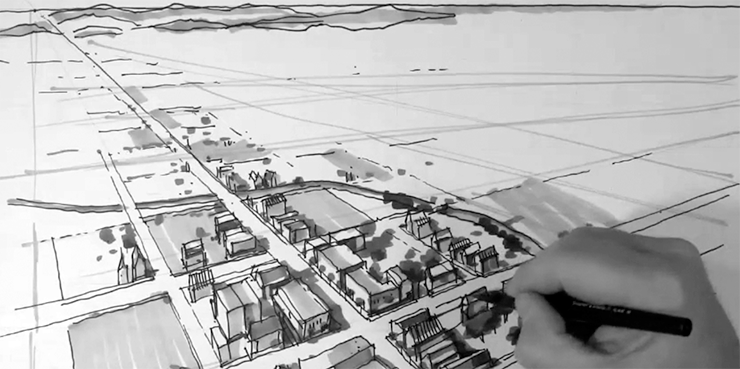
Now it is your turn to imagine a town. Start by laying out a street intersection with buildings. Draw a town with this Draw a long Video. Become a town planner!
Activity 6 – Draw A long Town Intersection
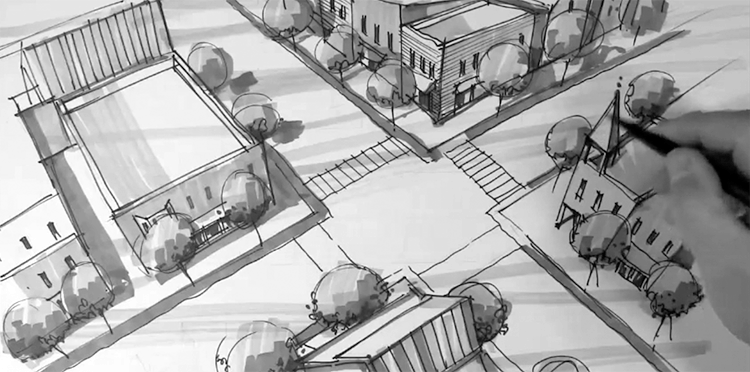
Towns, as they attract new residents, add more blocks, and with more blocks, there are more intersections and street crossings. Draw a long with this video of a town intersection.
Activity 7 – TOWN Squares Draw A Long
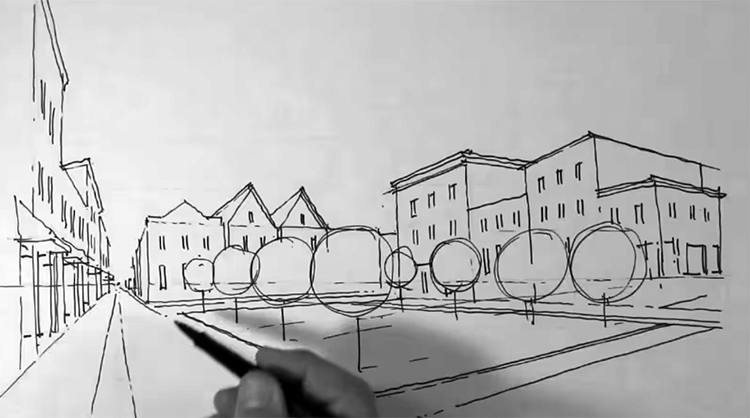
As towns attract more residents, the need for community gathering spaces rallies for a central Green Square. Farmers’ Markets, Art Fairs, holiday events, and cultural gatherings develop. Draw a long with this Town Green and imagine a town with an active center!
Review
Explore
- Budj Bim Cultural Landscape, Australia
- China's Small Towns
- DRAW ALONG 2
- DRAW ALONG 3
- DRAW ALONG 4
- DRAW ALONG TOWN 1
- EU Policy for towns
- Fighting Poverty in African Villages
- Global Eco Village
- Historic Center of Český Krumlov,
- Historic Town of Lunenburg, Canada
- Historic Town of St. George, UK
- History of Jamestown Virginia
- History of Quebec
- History of Sante Fe New Mexico
- India Small Towns
- Japan's Small Towns
- Mont St.Michel, France
- Most Beautiful British Towns
- Most beautiful French towns and villages
- Most Beautiful German Towns
- Most beautiful German towns and villages
- Most Beautiful Italian Towns
- Most Beautiful Italien Towns
- Most beautiful Spanish towns and villages
- New Addition to Town of Trillian, Georgia
- Safest 100 USA Towns
- SITELAB Pop Up Care
- Small towns in Bolivia
- Small Towns in the Netherlands
- Small Towns USA
- Taos Pueblo
- The Historic Villages of Shirakawa-go and Gokayama, Japan
- Town of Tillian Plan
- Towns and Cities in France
- Video Shaftsbury UK
- Villages in China
- World Bank How Do We Define Cities, Towns, and Rural Areas


















































